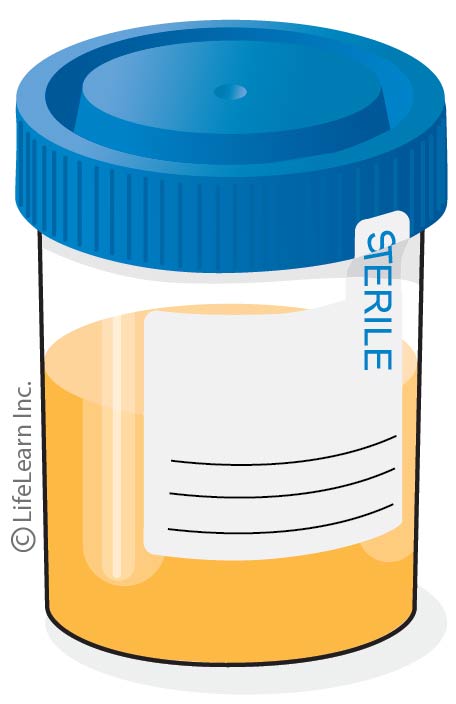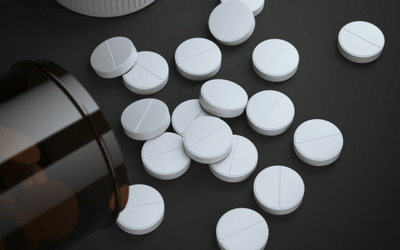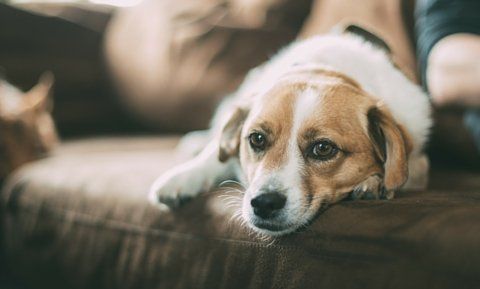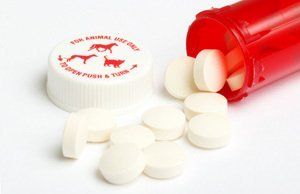Arsenic Poisoning in Cats
websitebuilder • May 27, 2019
What is canine acne?
Canine acne is an inflammatory disorder of the lips and the skin of the muzzle. Dogs with mild cases of acne often have red bumps or pustules (pimples) on their skin. This can, in more severe cases, lead to generalized swelling of the lips and muzzle, bleeding wounds, or scabs on the face. Left untreated, severe cases of canine acne can result in permanent scarring.

How will my veterinarian diagnose canine acne?
In most cases, your veterinarian can diagnose acne on the basis of clinical appearance. The characteristic skin lesions, distributed around the lips and muzzle, are relatively specific for this condition.
In some cases, however, further diagnostics may be required to confirm the diagnosis. Your veterinarian may recommend a biopsy of the skin to confirm the diagnosis of acne and rule out other skin disorders. Additionally, your veterinarian may recommend a bacterial culture and sensitivity in the case of infection, which can help identify the bacteria responsible for infection and appropriate antibiotics for treatment.
Why do dogs develop acne?
The underlying cause of canine acne is not fully understood. Canine acne was previously thought to be related to human acne, which is primarily hormone-induced, but more recent evidence has suggested that this is not the case.
Genetic predisposition, however, is thought to play an important role. Commonly-affected breeds include Boxers, English Bulldogs, Great Danes, German Shorthaired Pointers, Weimaraners, Mastiffs, Rottweilers, and Doberman Pinschers. Other breeds can be affected, though they are affected at lower rates than these predisposed breeds.
"Although the inflammation associated with canine acne is often 'non-infected' in the early stages, bacteria can easily colonize this damaged skin and lead to infection."
Many cases of canine acne are thought to be triggered by trauma to the skin of the chin or muzzle. This trauma can cause hairs to break off near the skin's surface, leading to inflammation within the hair follicle and eventual rupture of the hair follicle. When the hair follicle ruptures, its contents are released into the surrounding skin. This creates further inflammation within the skin, as the contents of the hair follicles are recognized as foreign by the surrounding tissues. Although the inflammation associated with canine acne is often sterile (non-infected) in the early stages, bacteria can easily colonize this damaged skin and lead to infection.
In some cases, acne may be associated with underlying skin conditions. Your veterinarian will assess your dog for possible food allergies or environmental allergies. If these allergies are suspected, managing the allergies may decrease acne. Additionally, your veterinarian will use a physical exam and/or laboratory tests to rule out parasites as a factor contributing to the acne.

How is canine acne treated?
The most common treatment for canine acne is topical benzoyl peroxide. This product (which is often available over-the-counter, or may be purchased from your veterinarian) helps to flush out the hair follicle and reduce bacterial contamination. In mild cases, benzoyl peroxide alone may be sufficient to resolve canine acne; in more severe cases, long-term benzoyl peroxide may be used to decrease the likelihood of recurrence.
There are a variety of other treatments that may be used for the treatment of canine acne. Steroids may be used to decrease inflammation within the skin. Oral steroids may include prednisone or prednisolone, while topical steroids often include betamethasone or flucinolone. Some patients may respond to a topical antibiotic, such as mupirocin, which decreases bacterial counts on the surface of the skin. Some patients may also respond favorably to isoretinoin (Retin-A®), which can lead to favorable changes within the hair follicles.
If the lesions are infected, your veterinarian may prescribe an antibiotic for the skin. If oral antibiotics are used, they are typically given for a total of four to eight weeks, depending on the severity of the infection. It is important to give all medications as prescribed by your veterinarian.
What can I do at home to help decrease my dog's acne?
One of the most beneficial things that you can do at home is resisting the temptation to "pop the pimples!" Squeezing the lesions on your dog's face will increase the likelihood of hair follicles rupturing and lead to worsening inflammation.
"Squeezing the lesions on your dog's face will increase the likelihood of hair follicles rupturing."
If you can identify a cause of trauma to your dog's muzzle or chin, decreasing this can trauma can decrease the acne. Possible causes of trauma include using the muzzle to root around in the dirt, eating from a plastic bowl that may have rough edges, or scratching at the face.
This client information sheet is based on material written by: Rania Gollakner, BS DVM
© Copyright 2018 LifeLearn Inc. Used and/or modified with permission under license.

Acetazolamide (brand names: Diamox®) is a diuretic and antiglaucoma agent, used primarily to treat glaucoma (increased eye pressure), syringomyelia (cyst that affects nervous system), and metabolic alkalosis. Its use in cats and dogs to treat glaucoma, syringomyelia, or metabolic alkalosis is ' off label ' or ' extra label '. Many drugs are commonly prescribed for off label use in veterinary medicine. In these instances, follow your veterinarian’s directions and cautions very carefully as their directions may be significantly different from those on the label.



